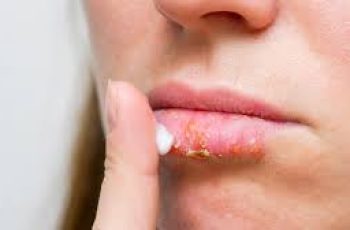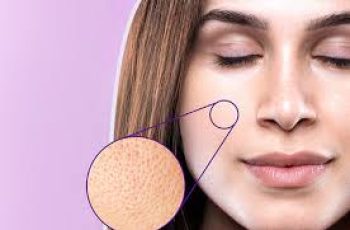Clefts – the hype about huge gaps between teeth
For decades, people have been turning to dentists for professional help to close existing gaps between teeth and get a normal, if not perfect, smile. But have you ever heard of the exact opposite? Creating gaps between teeth? If so, what is the first thing that comes to your mind?
My response: “You can’t be serious!” I couldn’t believe it and my jaw dropped. But I am an ambassador for healthy and functional teeth and for preventing tooth loss and gum disease. I would like to say that this is a completely normal reaction. I am often asked by patients, friends and acquaintances what treatment options are available for gaps between teeth, but none of them ask how to create gaps between teeth.
Clefts are most commonly found between the two front teeth (midline clefts) and appear as a gap. In some cases, it is barely visible, but in others, it is very noticeable. Think of a friend, perhaps your favorite celebrity, a catwalk model or even a family member who has such a gap between teeth. Or more gaps. Many find it cute, unique, different, sexy or unusual, ugly, unattractive, abnormal. It’s a mixed bag. But with social media and beauty ideals driving new dental trends, many women in particular are looking for information and advice on how to fill these gaps.
“Prevention is better than cure!”
It is important to understand that we treat gaps in adults primarily because we did not prevent them during childhood and/or adolescence. Causes of diastema are:
Oversized lip frenulum
Small teeth size compared to jaw size
Small teeth size in relation to arch length
Bite development
Missing teeth
Gum disease and tooth loss
Genetic factors
All of the above causes occur early in a child’s tooth development and can be corrected by:
Orthodontic treatment (braces)
Surgical treatment (frenectomy)
Behavioral changes (e.g. thumb sucking)
Failure to take these steps can leave an adult with a permanent gap, which can be corrected later in life by doing one of the following:
Orthodontic treatment (fixed/removable braces, permanent retainers)
Veneers
Dental bonding
You may have noticed that gap reduction is a dental procedure designed to maintain the health and function of the dental appliance and only becomes an aesthetic issue in adulthood.
Closing the gap sounds simple, but it is a very complex process involving many challenges and efforts for both the dentist and the patient, as it involves:
Long-term treatment (months, years for orthodontic patients)
Very good oral hygiene (requires extra time, special tools and techniques)
Pain and discomfort
Multiple visits to the dentist, dental hygienist and prosthetist (sometimes even dental surgeon)
Extra care when biting (for teeth restored with veneers, dental bonding)
Gum disease (caused by teeth restored with veneers)
Financial burden (can be very expensive)
Results (the final result cannot always be predicted and is not guaranteed to meet your expectations).
The implications are multifaceted, and this little big picture should help you understand that it is not a simple thing that happens overnight or at the snap of a finger. Now, with this information, try to imagine what it means to create a fissure.
“If it ain’t broke, don’t fix it!”
This quote is well known, but don’t smart people know best? We believe that our dentists are knowledgeable and smart when it comes to protecting teeth and maintaining oral health, function and beauty. While there is a ton of research and clinical data on “space closure” and its outcomes, there is none when it comes to “creating one or more spaces.” Therefore, we must be wise and cautious in deciding to offer this type of treatment to our patients, and the only treatments currently available are:
Orthodontic treatment (fixed/removable braces, permanent retainers)
Veneers, dental bonding
Now note that the long list of treatment consequences below remains the same. But the most important things to consider are:
Your overall appearance will change dramatically
There will be speech impairments (e.g. lisp)
Tongue thrust may occur, which may cause the position of teeth to shift over time
Saliva and fluids will be difficult to retain in the mouth, resulting in involuntary “spitting.”
Gum disease may develop
Reversing the process may not be an option
Finally, remember:
“Trends come and go”
Many trends are like the stock market: unpredictable and highly volatile. They can create insecurity and unrealistic expectations, or promote good, healthy habits and personal acceptance. There are a lot of comments on social media platforms from frustrated people who hate their gaps and want to change that, and there are a lot of comments from happy people who love their gaps and wouldn’t change them for the world. But what if you had an amazing set of healthy, straight, white teeth? Would you choose to make your teeth look cuter, more unique, different, sexier or unusual, ugly, unattractive or abnormal? You are already at least one of these things, to someone else or yourself. So what’s there to change? And more importantly: why?
DQH Can I use salicylic acid first and then vitamin C?
It’s easy to create a skincare routine, but knowing how to use it is another thing entirely. In most cases, if you’re not getting the desired skin results, it could be due to the layering of conflicting ingredients. So, is it possible that salicylic acid and vitamin C are such ingredients? Or are these active ingredients the duo that’s been missing from your skincare routine? If you want answers, stick around because today we are going to explain the benefits of salicylic acid and vitamin C and how they can be used in your daily life.
What are the benefits of salicylic acid for skin?
Salicylic acid is one of the most commonly used beta hydroxy acids and is favored by many people with oily, acne-prone skin. This acid is derived from willow bark, and unlike its water-soluble relatives (called alpha-hydroxy acids), salicylic acid is oil-soluble, which means it can penetrate deeper into the lower layers of the skin. Once it reaches the lower layers, it can help unclog pores of excess sebum, dirt, bacteria, debris, and impurities. This results in clearer skin tones and greater definition.
Not only does salicylic acid benefit the underlying layers, but the outer surface of the skin benefits as well. When applied to the skin, salicylic acid removes the buildup of dead skin cells. This is accomplished by breaking the bonds that hold dead cells to the surface. Over time, this can cause the complexion to look dull and prone to acne, blackheads, and other blemishes.
If you’d like to learn more about salicylic acid and how it can improve your skin, check out this dedicated blog post from a beauty insider.
What are the benefits of vitamin C for skin?
Vitamin C is considered one of the most powerful antioxidants, which means it is very effective at fighting free radicals and preventing them from causing further skin damage. Examples of free radicals include pollution, central heating, UV rays and harsh climate. They attack proteins, fats and cell membranes as soon as they come into contact with the skin, causing signs of premature aging such as fine lines and wrinkles as well as hyperpigmentation, flaky patches of skin and loss of elasticity.
Many people usually prefer to use vitamin C in their morning routine as this ingredient gives the complexion a radiant glow. You’ll also find that vitamin C can target areas of hyperpigmentation, plumping the skin and reducing the appearance of fine lines and wrinkles.
The thing about vitamin C is that there are a lot of outdated studies going back to the 1950s that describe vitamin C as an unstable skin component. Thanks to improvements in modern technology, this is no longer the case as all products now contain a stable form of vitamin C.
Visit The Beauty Insider to learn more about vitamin C. So please check out our blog post.
Can I use salicylic acid first and then vitamin C?
Yes, you absolutely can. In fact, it’s thought that using salicylic acid before using vitamin C ensures it penetrates faster and works faster.
This is an efficient way to utilize two power sources, and the reason has to do with pH. For example, the skin’s natural pH is about 4.7, making it slightly acidic. Salicylic acid and vitamin C are also both acidic, and you’ll find that vitamin C is absorbed quickly into the skin. Therefore, using salicylic acid beforehand can increase the acidity of the skin and allow vitamin C to penetrate into the skin faster.
While this is considered an effective way to combine two powerful ingredients, you need to be aware of your skin type and how it reacts to certain active ingredients. Even people with perfect, normal skin can experience skin sensitivity and irritation. Therefore, always consult a doctor or dermatologist before using any new products on your skin.
It’s also important to follow skin application rules. In this case, you need to use the product correctly to ensure you get the best results for your skin. If you’re not sure what I mean, the basic rule for skin is to start with the thinnest consistency and work your way up to the thickest consistency. This prevents a barrier from forming on the surface, preventing other active ingredients from penetrating the skin.
Can I use salicylic acid at night and vitamin C in the morning?
Yes, absolutely, this is considered the most effective way to get returns without any adverse side effects. This is because there is enough time between applications to ensure that the skin’s pH levels return to balance.
You’ll also find that Vitamin C is rich in antioxidants and is perfect for use in the morning to ensure your skin is protected and looking its healthiest. Due to the small size of salicylic acid molecules, it is an acid that is able to reach the deepest parts of the skin. While this is effective at keeping skin clear, it also increases the risk of irritation and photosensitivity. Therefore, many people prefer to use powerful BHAs in their evening routine without exposure to UV rays, pollution, or harsh weather.
Warning: If you avoid using sunscreen every day, none of these ingredients will do what your skin needs. The combination of chemical peels and powerful ingredients increases the risk of further damage to the skin’s surface. Use SPF 50 every day to keep your skin protected and your lipid barrier healthy, even on cloudy days, keeping your skin in top condition.



